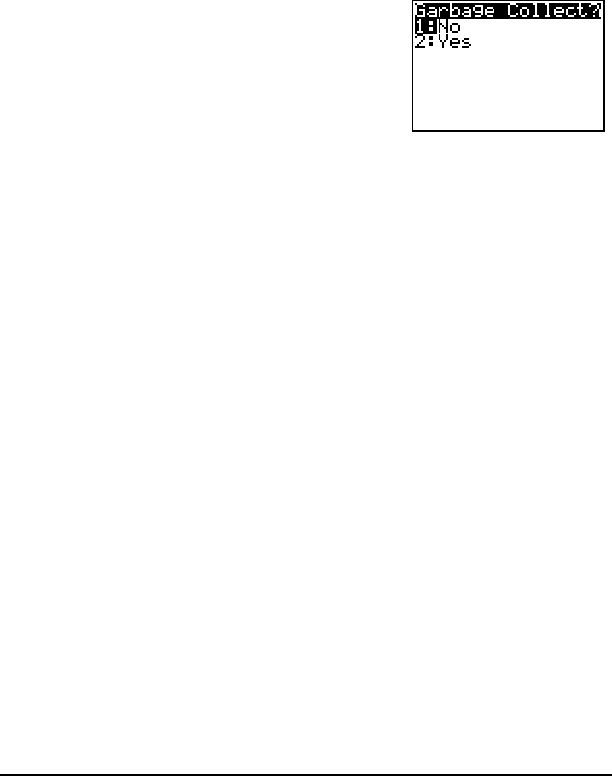
94 Memory and Variable Management
The Garbage Collect? message lets you know an archive will take longer
than usual. It also alerts you that the archive will fail if there is not
enough memory. The message can also alert you when a program is
caught in a loop that repetitively fills the user data archive. Select
No to
cancel the garbage collection process, and then find and correct the
errors in your program.
The TI-84 Plus will attempt to rearrange the archived variables to make
additional room.
Responding to the Garbage Collection Message
If you select 2:Yes, the process message Garbage Collecting... or
Defragmenting... will be displayed.
Note: The process message Defragmenting... is displayed whenever an
application marked for deletion is encountered. Garbage collection may
take up to 20 minutes, depending on how much of archive memory has
been used to store variables.
After garbage collection, depending on how much additional space is
freed, the variable may or may not be archived. If not, you can unarchive
some variables and try again.
Why Is Garbage Collection Necessary?
The user data archive is divided into sectors. When you first begin
archiving, variables are stored consecutively in sector 1. This continues to
the end of the sector.
An archived variable is stored in a continuous block within a single sector.
Unlike an application stored in user data archive, an archived variable
cannot cross a sector boundary. If there is not enough space left in the
sector, the next variable is stored at the beginning of the next sector.
Typically, this leaves an empty block at the end of the previous sector.
• To cancel, select
1:No.
• If you choose 1:No, the message
ERR:ARCHIVE FULL will be displayed.
• To continue archiving, select 2:Yes.


















